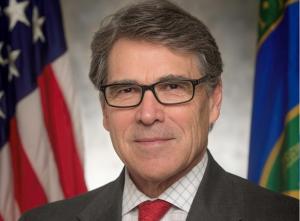DOE, EPA Signal New Direction in Federal Energy Policy

During the week of October 10, Scott Pruitt, administrator of the U.S. Environmental Protection Agency (EPA), signed an edict repealing the Clean Power Plan, which had been crafted by the EPA in 2015 in an effort to combat climate change and the adverse impacts on air quality stemming from emissions of carbon dioxide (CO2) from electric generating plants and other industrial facilities. This week's EPA pronouncement followed on the heels of a directive issued by Rick Perry, secretary of the U.S. Department of Energy (DOE), in which the Federal Energy Regulatory Commission (FERC) was charged with considering modifications to its pricing regimen for electricity sales so as to incorporate an adder for nuclear and coal-fired generation in recognition of the "resilience" they offer the grid. Both the EPA and DOE moves seemed to have been motivated by a desire to reinvigorate the coal and nuclear industries.
Nixing of the Clean Power Plan came as little surprise, given that the EPA had already asked the U.S. Supreme Court to hold in abeyance all pending challenges to the plan. In seeking to postpone further court action in the cases, the EPA asserted that it wanted time to study and review the regulations. And although the EPA had stopped short of saying that it would refuse to defend the Clean Power Plan in litigation, it was evident that the EPA was relieved when the Supreme Court granted its request for a stay.
The Clean Power Plan encompassed a timetable for power plants and other industrial installations to transition away from oil and coal as a source of generation. The plan had been developed on the basis of widely accepted scientific evidence that CO2 emissions are a leading cause of climate change and a primary contributor to poor air quality. In promulgating the rule, the EPA had pointed out that prior Supreme Court decisions had declared the agency responsible for regulating CO2 under the Clean Air Act.
However, in some areas of the country, especially coal-producing states, the Clean Power Plan was met with criticism, with officials from the coal industry and associated states viewing the plan as inciting a "war on coal." As a result, more than 20 states, led by West Virginia and Texas, had filed suit protesting the plan. Among the plaintiffs was Scott Pruitt, acting in his then-capacity as attorney general of Oklahoma. The irony of his action in repealing the Clean Power Plan when he had been among its most vocal opponents has not gone unnoticed.
Despite clear and unambiguous holdings from the courts that the EPA must regulate CO2 as part of its duty to enforce the Clean Air Act, Pruitt provided no replacement plan to go along with the repeal of the Clean Power Plan. Although his statement formally announcing revocation of the plan alluded to solicitation of comments from the public on the possibility of a different regulatory scheme, he offered no insight as to what type of a plan the EPA might be envisioning.
In a separate notice, Pruitt urged Congress to do away with tax incentives for renewable energy projects. The system of tax credits for wind and solar developments has been extended by Congress in the past. As presently structured, the tax incentives for wind farms is set at 2.3 cents per kilowatt-hour, but that amount will gradually decline until it is phased out entirely in 2020. The solar tax credit, currently at 30%, is similarly scheduled to be ramped down, but it will not completely disappear until 2022.
According to Pruitt, renewable energy projects have progressed to the point where they should be able to "stand on their own and compete against coal and natural gas." He posited that with Congress poised to tackle a rewrite of the tax code, this would be an opportune time to eliminate the wind and solar tax breaks earlier than planned.
As to DOE's instructions to the FERC, Perry commented that the three recent hurricanes that struck the U.S. served to highlight the ongoing need for power plants that can accommodate large on-site reserves of supply. He observed that in times of "supply stress," such as in post-storm conditions, nuclear and coal-fired generating facilities can play a vital role in assuring the restoration of service much quicker.
But, Perry contended, such facilities should be paid commensurate with the extra reliability assurance they offer. He therefore recommended that power plants be compensated not only for the capacity they generate, but also for the reliability and resiliency (R&R) they provide.
However, to introduce a new pricing factor for R&R, applicable only to coal and nuclear facilities, could create confusion and significantly disrupt the competitive wholesale markets the FERC has worked to establish and administer over the last 20 years. The markup for R&R also undoubtedly would lead to higher electricity rates overall and likely would enable some older coal-fired plants to remain in commercial operation longer than planned.
While Perry's proposals were hailed by the coal companies, they were not greeted as warmly by all segments of the energy industry. The natural gas sector, which has a huge presence in Perry's home state of Texas, indicated strong disagreement with a plan that would in essence give a pricing preference to coal and nuclear power plants. Others pointed out that some older coal plants in particular may have such outdated technology as to render them too inefficient to maintain, even with a price adder.
As to nuclear power, Perry underscored DOE's commitment to such when he announced additional federal financial support for the construction of two advanced nuclear reactors at the Alvin W. Vogtle Electric Generating Plant. The support will take the form of up to $3.7 billion in loan guarantees to the Vogtle facility's owners, with $1.67 billion going to Georgia Power Company, $1.6 billion to Oglethorpe Power Corporation, and $415 million to three subsidiaries of the Municipal Electric Authority of Georgia (MEAG). The Department of Energy had previously guaranteed $8.3 billion in loans to Georgia Power, Oglethorpe, and MEAG subsidiaries to facilitate construction of Vogtle Units 3 and 4.
The Vogtle project is the first new nuclear power plant to be licensed and commence construction in the United States in more than three decades. The two new 1,100-megawatt Westinghouse AP1000® nuclear reactors at Vogtle represent the first deployment of the innovative technology in the country. However, because Westinghouse has now filed for bankruptcy, the future of the Vogtle facility had been thrown into doubt.
According to DOE, however, the reliability aspects of nuclear energy made it appropriate for the project to receive further federal support. To that end, Perry referenced the fact that once online, the new nuclear reactors are expected to provide more than 17 million megawatthours of clean electricity annually, enough reliable electricity to power more than 1.6 million American homes while avoiding nearly 10 million metric tons of CO2 emissions each year.
Perry noted in his statement that if the new Vogtle loan guarantees are officially approved, they would be the first issued under the $12.5 billion Advanced Nuclear Energy Projects Solicitation, which was released in December 2014.



